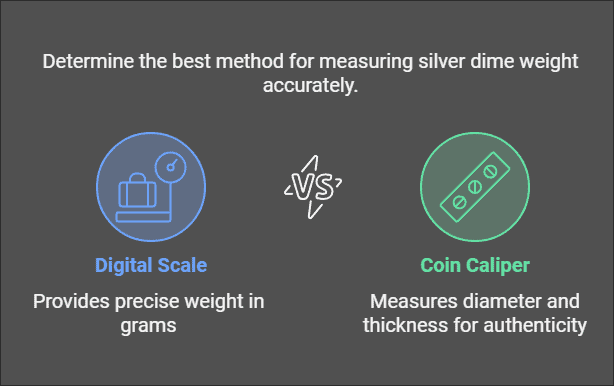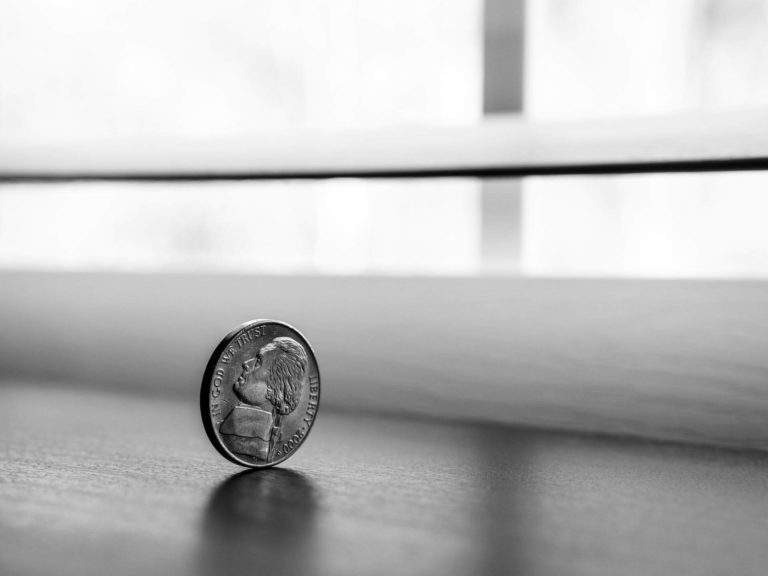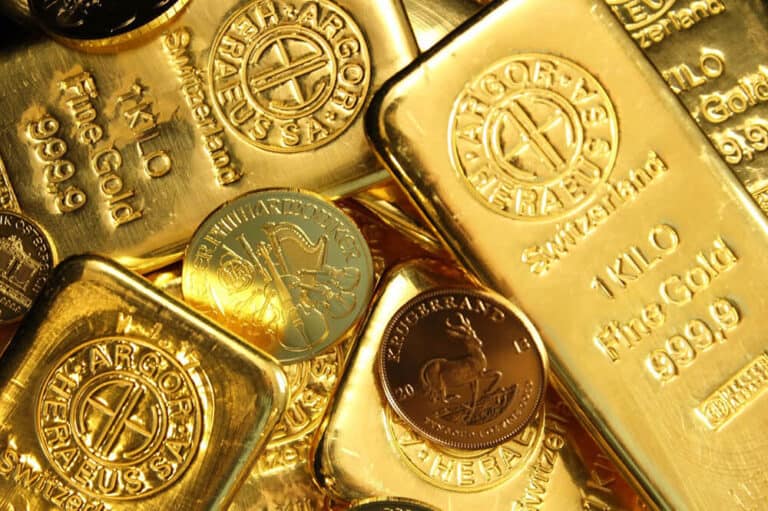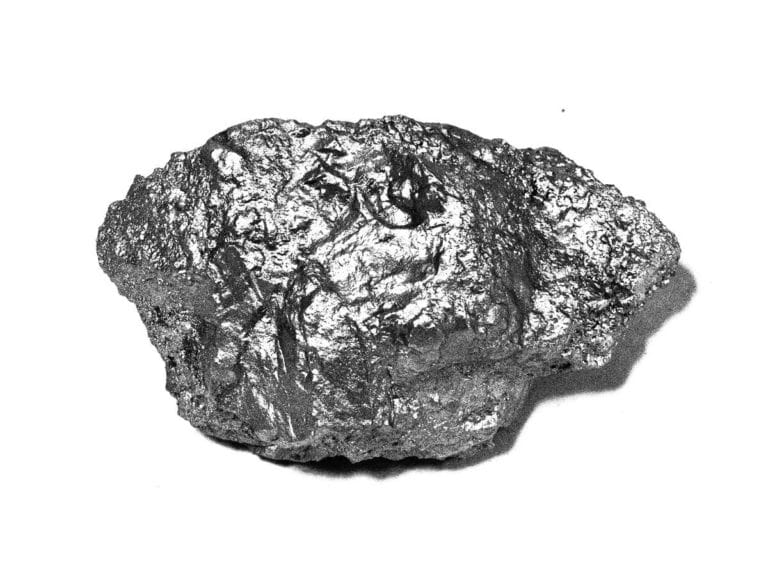A silver dime is a ten-cent coin composed of 90% silver and 10% copper, making it a valuable piece for collectors and investors. Silver dimes have a rich history, with notable examples like the Mercury Dime, Barber Dime, and Roosevelt Dime. These silver coins are often considered junk silver but hold significant value due to their silver content and minting history.
The weight of a silver dime is 2.5 grams (approximately 0.078 troy ounces), a metric that has remained consistent through various minting periods. This weight is crucial for determining the coin’s value and authenticity, especially in transactions involving precious metals and bullion investment.
Understanding how to measure and verify the weight of a silver dime is essential for maintaining its market value. Factors such as wear and tear, mint marks, and coin condition also play significant roles in assessing a silver dime’s overall worth. Additionally, having accurate measurements is critical for those purchasing silver as an investment tool.

Key Takeaways:
- A silver dime is a coin made of silver and has a rich history dating back to the early 19th century. Notable coin designs include the Seated Liberty Dime and Liberty Head Dime.
- The weight of a silver dime is crucial in determining its value and authenticity.
- The average weight of a silver dime is 2.5 grams and can be measured accurately using a scale or coin caliper. This consistent dime weight is essential for determining the coin’s value in the market.
What is a Silver Dime?
A silver dime is a ten-cent coin composed of 90% silver and 10% copper.
Silver dimes, like the Roosevelt Dime, were minted by the US Mint and are used for collecting and investing in precious metals. These coins are an excellent option for those looking into junk silver for emergency preparation and long-term investment.
History of the Silver Dime
The history of the silver dime began with the Coinage Act of 1792, which established the U.S. Mint and authorized the creation of dimes containing silver. The act marked a significant milestone in U.S. history and the development of modern currency.
The Mercury Dime, minted from 1916 to 1945, featured Liberty’s profile designed by Adolph A. Weinman. The Barber Dime, produced from 1892 to 1916, showcased Liberty with a cap and was designed by Charles E. Barber.
The Roosevelt Dime, introduced in 1946 and designed by John R. Sinnock, honors President Franklin D. Roosevelt and remains in circulation, reflecting changes in U.S. coinage since the 1965 transition away from silver in dimes.
Composition of a Silver Dime
The composition of a silver dime is 90% silver and 10% copper.
This alloy enhances the coin’s durability and value for collectors.
What Percentage of Silver is in a Silver Dime?
A silver dime contains 90% silver.
Weight of a Silver Dime
The weight of a silver dime is 2.5 grams or 0.078 ounces (troy).
This weight has remained consistent across various minting periods, ensuring reliability in its silver content.
How Much Does a Silver Dime Weigh?
A silver dime weighs 2.5 grams.
In troy ounces, the weight is approximately 0.078.
What is the Weight of a Silver Dime in Grams?
A silver dime weighs 2.5 grams.
Why is the Weight of a Silver Dime Important?
The weight of a silver dime is important for determining its value and authenticity.
Silver dimes with accurate weight confirm genuine silver content, which is crucial for investors and collectors.
Weight verification helps ensure the correct value in transactions involving silver bullion investment.
How Does the Weight of a Silver Dime Affect its Value?
The weight of a silver dime affects its value based on the current market price of silver.
As the weight of the silver dime increases, so does its value.
Collectors and investors consider the weight to determine the silver content and market value of the coin.
How to Measure the Weight of a Silver Dime
To measure the weight of a silver dime, use a digital scale for an accurate reading. Ensure the scale is suitable for measuring precious metals to get precise results.
Place the silver dime on the scale to get the weight in grams.
- Most silver dimes weigh approximately 2.5 grams.
Using a Scale
Using a digital scale to measure a silver dime involves placing the dime on the scale and reading the weight in grams or troy ounces.
Ensure the digital scale is calibrated and placed on a flat, stable surface for accurate measurements.
Accurate weight measurements are essential for determining the value of silver dimes. This accuracy is crucial for transactions involving silver bullion and for those investing in precious metals.
Using a Coin Caliper
A coin caliper measures the diameter and thickness of coins, providing precise readings to verify authenticity.
To use a coin caliper, place the coin between the jaws, close gently to contact edges, and note the diameter and thickness.
Coin calipers help detect counterfeit coins by identifying discrepancies in size and thickness.
How to Ensure the Accuracy of the Weight Measurement
To ensure the accuracy of weight measurements for silver dimes, use calibrated tools like a digital scale or coin caliper.
Clean the coins gently before measuring to remove dirt or debris that could affect weight.
Perform repeated measurements to confirm the precision of the tools and achieve consistent results.
Other Factors to Consider When Weighing a Silver Dime
When weighing a silver dime, consider factors such as wear and tear, which can reduce weight, and any variations in minting that might affect the coin’s mass.
These factors impact the actual weight compared to the standard weight of 2.5 grams for a silver dime.
Wear and Tear
Wear and tear on a silver dime can reduce its condition and lower market value, as collectors prefer coins in better condition.
Wear and tear impacts are assessed through scratches, tarnishing, and luster.
Proper handling and storage in protective cases, such as packaging bags, can help preserve the condition of silver dimes.
Mint Mark and Rarity
A mint mark is a small letter on a silver dime indicating the mint location where the coin was produced.
Mint marks like ‘S’ for San Francisco, ‘D’ for Denver, and ‘P’ for Philadelphia affect the coin’s market value. Some mint marks, like those from the Seated Liberty Dime era, are particularly rare.
Mint marks can significantly impact a dime’s rarity and collectibility among numismatists. These marks are essential in understanding the minting history of silver dimes.
Condition of the Coin
Coin condition refers to the physical state of a coin, which determines its market value.
A standardized grading system ranging from poor to uncirculated evaluates coin quality.
Coins in mint state attract higher interest and value compared to those graded fine or very fine. Coins associated with historical events, like those minted during the March of Dimes campaign to combat Infantile Paralysis, also hold special significance.
Even minor condition differences significantly impact profits or losses in coin transactions.
Frequently Asked Questions
How Much Does a Silver Dime Weigh?
A silver dime weighs 2.5 grams.
What is the weight of a silver dime?
The weight of a silver dime is 2.5 grams.
How heavy is a silver dime?
A silver dime has a weight of 2.5 grams.
Is the weight of a silver dime different from other dimes?
Yes, the weight of a silver dime is different from other dimes. It is slightly heavier than a modern dime, which weighs 2.268 grams.
How can I accurately measure the weight of a silver dime?
You can use a digital scale or a coin scale to accurately measure the weight of a silver dime.
Does the weight of a silver dime affect its value?
Yes, the weight of a silver dime is an important factor in determining its value. The heavier the coin, the more silver it contains, and therefore, the higher its value.
Authors & Disclosures
- Our content is independently written and reviewed by trusted reviewers & fact-checkers.
- We can earn money by connecting you with top Gold IRA Companies. Learn how our reviews work.
- Want to learn more? Meet our authors and explore our editorial policy.















